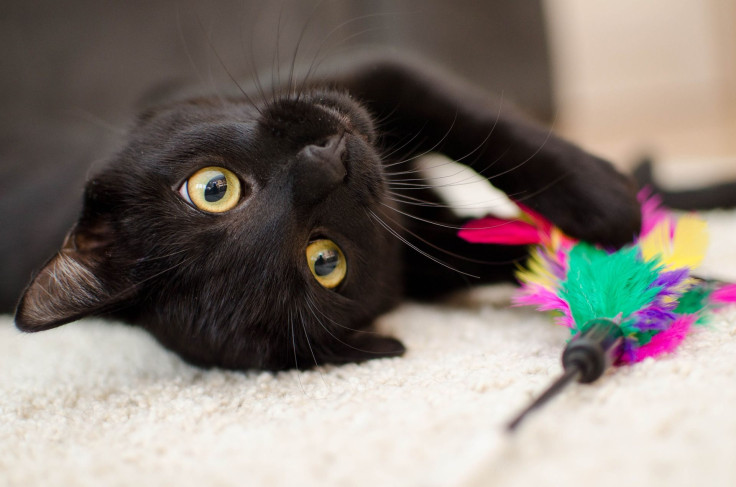Pet Cats Can Actually Tell If You're Talking To Them
KEY POINTS
- Researchers tested if pet cats respond more to cat or adult-directed speech
- It appears the cats were able to distinguish their owner's voices from a stranger's
- They also changed their behavior when their owners were speaking in a cat-directed tone
Can cats tell if their owners are talking to them or another person? A team of researchers found that the felines actually exhibit increased behavior when their owners' voices are directed toward them.
Cats often get a bad rap for being rather aloof creatures, but cat owners may beg to differ. For the new study, published this week in Animal Cognition, the researchers sought whether cats respond more to cat-directed speech (CDS) or adult-directed speech (ADS).
People are known to change the tone of their voice depending on who they're speaking to, publishing company, Springer, explained in a news release. For instance, the tone of people's voices tend to be different when they're talking to an infant or pet than when they're talking to another adult.
Previous studies have also shown that people tend to change their tone when they're talking to cats, noted Springer. But the question now is whether cats actually distinguish the difference.
"In contemporary western cultures, most humans talk to their pet companions," the researchers wrote. "The way dogs respond to dog-directed speech (DDS) has raised scientists' interest. In contrast, much less is known about how cats perceive and respond to cat-directed speech (CDS)."
To find this out, the researchers conducted the study under three conditions and logged the cats' behavior intensity (ex. movement, pupil dilation) in response to their owners' or strangers' voices.
In the first condition, they played pre-recorded audio clips of the cats' owners and that of a stranger calling their name. Out of 16 cats, 10 decreased their behavior intensity in response to the stranger's voice but increased "significantly" again upon hearing their owner's voice, noted Springer. This suggests that they can identify their owners' voices.
For the second part and third parts, the cats heard their owners' and the strangers' voices in ADS and CDS. Indeed, the cats demonstrated increased behavior intensity when they heard their owner's voices in CDS and decreased behavior when their owner was speaking in ADS. This change was not observed when the stranger was speaking in ADS or CDS.
This could mean that not only can the cats identify their owner's voice from a stranger's voice, they may also be able distinguish if their owner is talking to them or to another person based on the tone of their voice.
While the sample size is rather small, and thus may not be representative of all cat behavior, researchers say this sheds new light on the relationship between humans and cats.
"These findings bring a new dimension to the consideration of human–cat relationship, as they imply the development of a particular communication into human–cat dyads, that relies upon experience," researchers wrote. "Our results highlight the importance of one-to-one relationships for cats, reinforcing recent literature regarding the ability for cats and humans to form strong bonds."

© Copyright IBTimes 2024. All rights reserved.






















